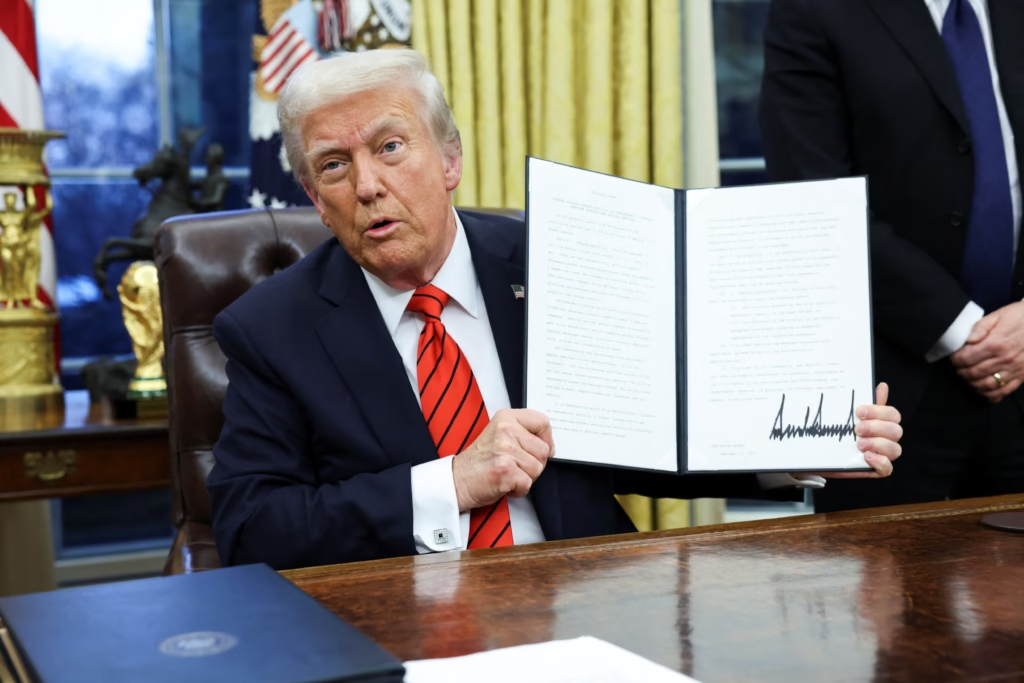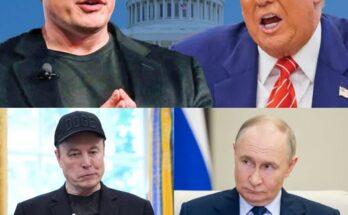President Donald Trump has once again taken center stage in the political landscape with a series of high-profile decisions that have reshaped U.S. foreign relations, economic policies, and domestic governance. From diplomatic outreach to Iran to escalating trade tensions with China, Trump’s recent actions have sparked debates both in Washington and on the global stage.
This article explores the key aspects of his latest policies, their potential impact, and the reactions from both supporters and critics.

Foreign Policy Decisions
1. U.S.-Russia Relations: New Sanctions and Tariff Threats
One of the most notable moves from the Trump administration has been the consideration of new sanctions and tariffs on Russia. Amid heightened tensions in Eastern Europe, Trump’s approach marks a departure from his earlier stance on Russia, which was characterized by attempts to improve relations with President Vladimir Putin.
Key Points:
- The U.S. government is weighing additional economic sanctions on Russian industries, particularly in the energy and technology sectors.
- Trump has hinted at imposing tariffs on Russian imports until a ceasefire is reached in Ukraine.
- The move is seen as a response to increasing Russian military aggression and pressure from European allies.
Reactions:
- Supporters: Argue that the sanctions are necessary to curb Russia’s expansionist policies.
- Critics: Question whether Trump is genuinely committed to containing Russian influence or if this is a strategic move to appear tougher on Moscow.
2. Diplomatic Outreach to Iran: A Shift from Maximum Pressure?
Another surprising turn in Trump’s foreign policy has been his attempt to engage with Iran diplomatically. The president recently revealed that he had sent a letter to Iranian officials, signaling a willingness to negotiate a new nuclear deal.
Background:
- Under his previous administration, Trump withdrew from the 2015 Iran nuclear deal and imposed harsh economic sanctions on Tehran.
- The Biden administration attempted to revive talks, but progress stalled.
- Now, Trump appears to be pursuing a new diplomatic strategy, possibly to achieve a breakthrough ahead of the 2028 elections.
What’s in the Letter?
While details remain scarce, sources suggest that Trump’s message to Iran included:
- An offer to ease certain sanctions in exchange for Iran halting uranium enrichment.
- A call for regional stability to reduce tensions in the Middle East.
- An appeal for direct negotiations between Washington and Tehran.
Reactions:
- Foreign Policy Experts: Some see this as a pragmatic move, while others view it as an election-year strategy.
- Iranian Officials: Initial responses have been cautious, with Iran demanding clearer commitments from the U.S. before engaging in talks.
3. Trade Tensions with Canada and China
Trade policy has remained at the forefront of Trump’s agenda, with new tensions emerging with both Canada and China.
Canada-U.S. Trade Disputes
- Trump recently exempted Canada from certain tariffs but remains at odds with Prime Minister Justin Trudeau.
- The two leaders have clashed over lumber, dairy, and automobile tariffs.
- Despite economic integration, Trump’s administration has been pushing for a renegotiation of trade agreements, particularly regarding energy exports.
U.S.-China Trade War 2.0?
- Trump has reintroduced tariffs on Chinese goods, citing unfair trade practices.
- In response, China’s foreign minister vowed retaliation, potentially reigniting a full-scale trade war.
- Concerns are growing that rising tariffs could disrupt global supply chains and increase prices for U.S. consumers.
Economic Impact:
- Stock Market Reaction: U.S. stock futures have shown volatility in response to Trump’s trade policies.
- Businesses’ Concerns: Many industries are worried about supply chain disruptions and rising production costs.
Economic Policies: A New Direction?
1. Stock Market Performance and Investor Reactions
The financial markets have been closely watching Trump’s recent decisions, particularly on trade.
Key Developments:
- The Dow Jones and S&P 500 experienced fluctuations amid fears of trade war escalations.
- Technology stocks saw a boost, driven by AI and semiconductor industry growth.
- Energy markets reacted to discussions about potential oil sanctions on Russia.
2. Corporate Policies and Business Reactions
Several major U.S. companies have responded to Trump’s economic policies with strategic moves:
- Broadcom: Shares surged 10% following strong AI chip sales.
- Walgreens Boots Alliance: Announced a $10 billion deal to go private, boosting its stock price.
- Hewlett Packard Enterprise: Faced a 20% drop in stock due to weak earnings and layoffs.
3. Job Market and Employment Trends
Despite economic uncertainties, the U.S. job market remains stable, with a projected 170,000 new jobs added in February.
- Unemployment Rate: Holding steady at 4%.
- Labor Market Outlook: Some analysts worry that tariff increases could slow job growth in manufacturing.
Domestic Policy Changes and Challenges
1. Healthcare and Social Policy
Trump has hinted at revisiting the Affordable Care Act (Obamacare) and implementing changes to Medicaid funding.
Potential Changes:
- Reducing federal spending on Medicaid.
- Expanding privatized healthcare options.
- Allowing states greater control over healthcare subsidies.
These proposals have sparked concerns over potential cuts to healthcare access, especially among lower-income Americans.
2. Immigration Policy Updates
Immigration remains a hot-button issue, with Trump pushing for stricter border security measures.
- Border Wall Expansion: Plans to reinforce existing barriers at the U.S.-Mexico border.
- Deportation Policies: Increased focus on deporting undocumented immigrants with criminal records.
- Work Visa Reforms: Stricter requirements for H-1B visa applicants.
Critics argue that these policies could harm the U.S. labor market by reducing the availability of skilled foreign workers.
Public Reactions and Political Landscape
1. Trump’s Approval Ratings
Recent polls show a polarized electorate, with Trump maintaining strong support among his base but facing resistance from independent voters.
- Republican Base: Over 80% of GOP voters approve of his recent actions.
- Independent Voters: Mixed reactions, with concerns over trade policies and healthcare.
- Democratic Opposition: Strong disapproval, particularly on immigration and healthcare proposals.
2. Congressional Response
- Republicans: Largely supportive, though some senators express concerns over tariff policies.
- Democrats: Criticize Trump’s foreign policy approach, particularly on Iran and trade.
3. 2028 Presidential Election Impact
Trump’s recent moves are widely seen as positioning for the 2028 elections, with potential rivals weighing their options.
- Republican Challengers: Some moderate Republicans may challenge him on trade and diplomacy.
- Democratic Contenders: Expected to focus on healthcare, climate policy, and economic fairness.
Conclusion: The Road Ahead for Trump’s Policies
Trump’s latest policies have set the stage for significant shifts in U.S. domestic and international relations. While some view his actions as bold and strategic, others see them as potentially destabilizing.
Key questions remain:
- Will Trump’s diplomatic outreach to Iran lead to a breakthrough or stall?
- Can the U.S. avoid a full-scale trade war with China?
- How will domestic policies impact healthcare and immigration?
As the political landscape continues to evolve, the impact of Trump’s decisions will shape not only his presidency but also the future direction of U.S. policy.


